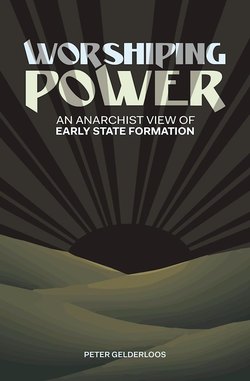Читать книгу Worshiping Power - Peter Gelderloos - Страница 9
III. Save Me from Yourself: The Statist Spread of Salvation Religions
Оглавление“Adoption of the [state] model was tantamount to adoption of Christianity, which legitimized the political order of the state.”54
The parastatal Catholic Church had attached itself to the Roman Empire, using that structure’s last centuries to spread the religion considerably, converting the elites and then the peasants of barbarian societies. When the empire fell, the Church held on to the dream. Even where it was too weak to constitute an imperial state, it spread a common cultural language that favored state formation and preached obedience to authority. Over centuries, it served as a centralized network to mobilize resources for state formation, until the power of those states increased to a point where they either monopolized the resources of the Church or rebelled against it, creating their own autonomous churches with a doctrine modified to legitimize the transformed basis of their power.
What is often missed in the progressive telling of history is that the Romans came closer to the creation of capitalism than subsequent societies, up until the end of the Middle Ages and the beginning of colonization beyond Europe. In the meantime, the Eastern Roman Empire, the Byzantines, and the Arab states kept capitalist structures alive in the Mediterranean world system. A major cause of the peasant rebellions that began to occur in Western Europe in the Late Middle Ages was the restoration of Roman law by local elites, which allowed land to be bought and sold as a commodity. As a direct result and parallel, the condition of peasants—who were much better off in the Middle Ages or under the earlier German tribes than their Roman homologue, the slave—began to deteriorate gravely, as the worker was created, on the one hand, and on the other the institution of slavery was brought back—not from nonexistence, but from decline—and intensified and expanded immeasurably.
The epidemics, poverty, starvation, servitude, intolerance, witch hunts—basically all the features assigned to the stereotypical image of the Dark Ages—were in fact characteristic of the end of the Middle Ages, the Renaissance, and the beginning of the Enlightenment. The Dark Ages were only dark for states, because their power, relative to their subjects, was greatly diminished compared to the centuries before and after. Many areas under Roman rule slipped from state control for a number of centuries, and as Kropotkin documented, many medieval towns freed themselves from lordly authority in the tenth and eleventh centuries.55
When state power was restored, it was accompanied by another Roman practice that might have slipped into obsolescence were it not for the diligence of the Catholic Church: usury. Contrary to its own doctrine, the Church encouraged finance—lending with interest—in order to fund its own power pursuits. In the fourteenth and fifteenth centuries, the most powerful financiers of Europe did business with, and were located close to the Vatican. Significantly, the promotion of usury was one major corruption of the Catholic Church that the Protestants did not consistently criticize. Only the Anabaptists, slaughtered by their erstwhile Protestant allies, harped on the sin of finance. (It is also curious how, nowadays, the frequent demonization of Islamic shari’ah law almost never mentions shari’ah’s prohibition of lending with interest, a detail that certainly worries the owners of Western media outlets more than questions of women’s rights.)
As both the Protestant Reformation and early Christianity demonstrate, salvation religions can subvert state authority and subsequently create new, more powerful authorities.
The extension of new state structures through the southern reaches of the defunct Roman Empire and beyond, riding the wave of Islam, was even more dramatic than the German explosion in the north. In many parts of the Arabian peninsula prior to Islam, the emergence of a state was impeded by the strong tribal organization of society. Tribal leaders would brook no other leaders standing over them, nor a bureaucratic organization diffusing their power; whereas tribal members typically considered submission to anyone but the proven leader of their own tribe an indignity (and the leader, in practice, won respect more than he enjoyed the a priori submission of his fellows). The exception to this dynamic had to be found in an exceptional and extrapolitical space: religion.
The solution to this impasse was worked out even prior to Islam by the evolution of the organization centred upon the sacred enclave, managed by an hereditary religious aristocracy respected and protected by the tribes.56
Islam, by being thoroughly monotheistic, could achieve the centralization of these enclaves; and by preaching the holiness of submission to God they could convince the tribal leaders to bow to a higher, apolitical authority in a way that preserved and even amplified their dignity, and left their own political authority symbolically intact. Religion broke the intense localism that often prevented state formation, and masked the emergence of a professional class. In the Yemeni highlands, the sayyids, who traced their decent to Muhammad, constituted the new hereditary religious aristocracy, and they were aided by a second-tier, the qadis, learned families who could not claim descent from the Prophet. Islamic shari’ah law also influenced the transformation of a collective property regime “towards the individual possession of the arable lands by all the adult members of the tribes.”57
